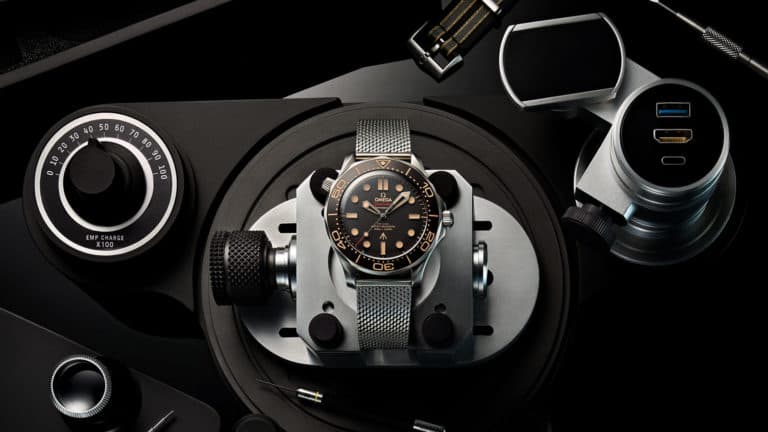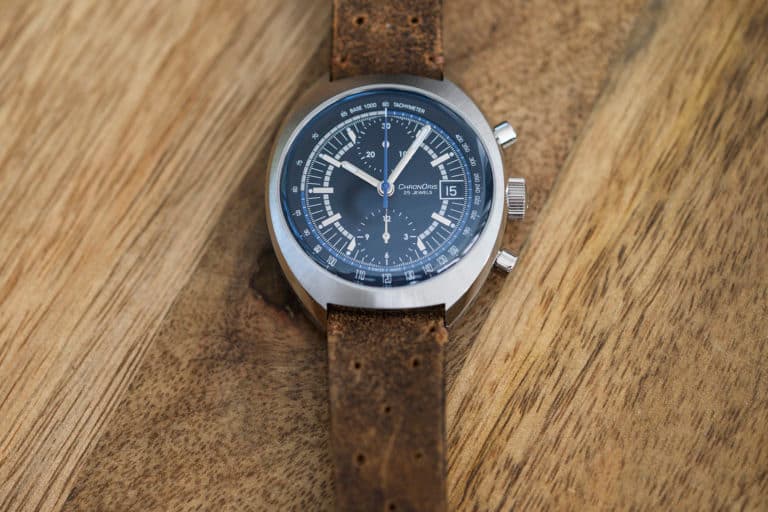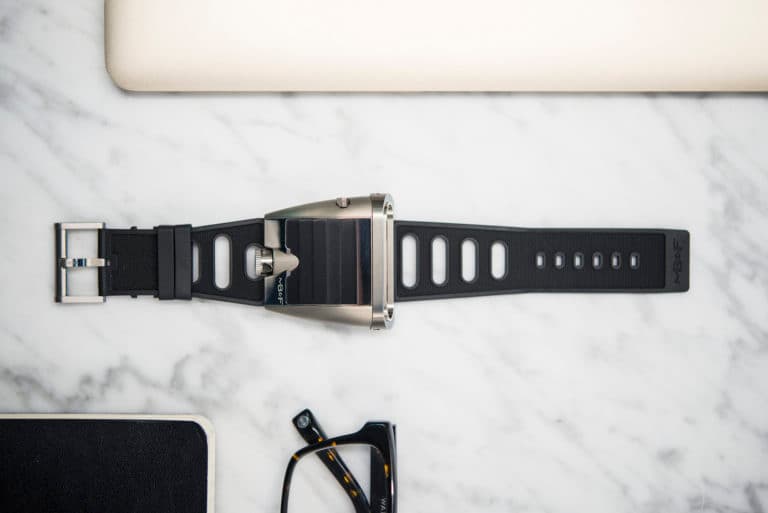The Royal Oak has had a varied career as a staple of the steel luxury sport watch genre for Audemars Piguet. Its quick success has meant a litany of references with different dials, sizes, case materials and complications, yet at its core, the watch has changed very little since its introduction in 1972. All this is thanks to the instantly recognizable design penned by Gerald Genta, in what would fall into a long line of icons we associate him with today.
The modern Royal Oak can be had in over 100 different forms, from openworked grand complications, to simple two-hander time only watches with the “AP” at 6 o’clock, just like the original reference 5402. In 2012, Audemars Piguet laid the foundation for the modern Royal Oak range, introducing the ref 15400 in 41mm (replacing the 39mm 15300) and the ref 15202 which slotted into the now vacant 39mm slot. The later is still as hard to get your hands on today as it was then thanks to its throwback approach in recreating the original A-series 5402. The 15400, on the other hand, is more widely available at or even under its retail price of $17,800.

We spent some time with the white dial Royal Oak reference 15400 to see if it stands up to the legendary name it bears. Before we get into that, let us take a brief look at the history of the Royal Oak and how it has come to be such a recognizable name in its 46 year tenure.
Origins of the Royal Oak
Entering the 1970s, Audemars Piguet, like many other brands, was under mounting pressure thanks to the increasing prevalence of Japanese built quartz watches skyrocketing popularity. The “quartz crisis” is a story for another day, suffice to say its effects were widespread and still felt to this day. A part of the solution from Audemars Piguet was the creation of steel luxury watch, for which they employed the services of the well established Gerald Genta. Genta had created successful designs for Universal Geneve in the Polerouter, Omega in the Constellation, and Patek Philippe in the Golden Ellipse.

Sketch of the first Royal Oak
In designing the Royal Oak, Genta was inspired by sea motifs, settling on the octagonal shape of a traditional diver’s mask, complete with visible screws at each of the 8 edges. The dial used an intricate blue petit tapisserie pattern, serving as backdrop to the two pencil hands keeping time, and date window at 3 o’clock. The bracelet was equally as intricate, with an integrated design, and links that tapered to the clasp. Construction was handled by the craftspeople at Gay Frères.
The 39mm case was large in its day, and houses the caliber 2121, a movement developed with Jaeger-LeCoultre in the late ‘60s. The automatic caliber measures a slim 3.05mm in thickness, allowing for a total case height of just 7mm. The dimensions make for a downright sublime presence on the wrist, a feature prized by collectors to this day.

The original Royal Oak, A-series
Audemars Piguet produced 1,000 examples of the Royal Oak right off the bat, now known as A-series watches. These early examples are especially sought after today by collectors, and are easy to spot thanks to their placement of the “AP” logo at 6 o’clock on the dial, rather than at 12 o’clock as seen in subsequent examples.
It took about a year for the Royal Oak to really find its legs at retailers, and when it did, Audemars was quick to expand the family into new variants. In 1981 they released the Royal Oak Perpetual Calendar, which was the thinnest in the world at the time. By the ‘90s, it had spawned a new family dubbed the Royal Oak Offshore, which was meant to appeal to a younger and more sporty part of the market with a bigger, chunkier case (much to the chagrin of Genta).

Royal Oak Offshore
Today, the Royal Oak is as varied as ever, with the Offshore family ever growing, and the Concept line taking things a step further still. All that aside, you can still get a Royal Oak that is true to the original in the reference 15202, even housing the same base caliber 2121.
Royal Oak reference 15400 “Selfwinding”
In 2012, for the 40th Anniversary of the Royal Oak, Audemars Piguet did a bit of house cleaning, introducing a new, larger base reference in the 15400, the 37mm reference 15450, and the throwback reference 15202. The 15400 is a modern take on the Royal Oak, sized appropriately for the time at 41mm in diameter, and the automatic caliber 3120 visible through the back. The intricate bracelet and tapisserie dial (in “Grande Tapisserie” form) are still present and accounted for, and no one will be mistaking this watch for anything other than a Royal Oak.

The 15400 is the same, but different. It represents a new direction with subtle changes to pretty much every aspect of the watch, which all add up to a not insubstantial departure from qualities of the original, for better or for worse. The Royal Oak is the backbone of the brand, so there’s no going too far off the rails here, and those with slightly larger wrists will find a lot to love in the 15400.

The caliber 3120 within the 15400 was designed and is developed entirely in-house. When AP’s 40% share of Jaeger-LeCoultre were sold to the Richemont Group in 2000, resources were moved to the brand’s factories in Le Brassus (headquarters) and Le Locle (Renaud & Papi, of which AP owns nearly 70%). The 3120, while lovely to look at, doesn’t seem all that exotic at a glance. The three-hander features a date window at 3 o’clock, 60 hours of power reserve, and is roughly the same dimensions as an ETA 2824. That’s no an indictment, though. Getting the little things right can be the most difficult, and here, there is nothing to hide behind. There’s a lot of trick engineering at play here, from a single mainspring providing 60 hours of reserve, a safety mechanism on the date change preventing user error, and a direct impulse escapement system that we can’t do justice here (it’s good, trust us).
On The Wrist
One unique feature of all Royal Oak watches is the thin, flat, and angular case. Coupled with the integrated bracelet, the watch takes a bit of fine tuning to fit comfortably. Once you find that sweet spot, it’s an easy watch to wear everyday. To be clear, the 15400 is a large 41mm, and due to the shape of the case, isn’t very forgiving on smaller wrists. If you’re at all on the fence at 40mm and over, you’ll want to wait it out for a 15202 (which is also a touch thinner). If most of your collection is north of 40mm, you should be just fine here.

The bracelet may look uncomfortable at a glance, with lots of hard edges and links for hair to get caught in. It doesn’t look like it should be comfortable, but somehow, it is. In practice I’d put it somewhere between a jubilee and an oyster bracelet in wrist feel, which is good place to be. There are no micro adjustments to be made at the clasp, but the links taper at the ends, meaning their removal should get you pretty close to a good fit, with any luck.

The dial is at once minimal, and complex. Reading the time in a simple affair against the tapisserie (French for tapestry) dial. The pattern on the dial offers a wealth of detail to take in, and if you’re not familiar with how it’s made, you should watch this as soon as you’re done here. The hour batons cut deep into the dial, with double batons at 12 o’clock (a nod to the original A-series), and make for a distinctive three-hand experience.

There’s a mixture of brushed and polished surfaces with the Royal Oak, and since there’s so many surfaces, it reflects a lot of light, especially on a moving arm. The polished, beveled edges around the perimeter of each link play a big role here. The watch enters into flashy territory with little effort, and will work best with the formal end of your wardrobe.
So, Who's it for?
The Royal Oak 15400 is luxury sport watch, like the Submariner. Unlike the Rolex, the Royal Oak comes off as more luxury than sport, and as such doesn’t fit the quite the same one-watch-collection potential of the Submariner. That said, the RO is a bit more sophisticated in its overall execution and Audemars Piguet a more rarified air than Rolex (and many, many other brands).
If you prefer sport watches that have an easier time flying under the radar, this likely won’t be the Royal Oak for you (maybe check out the Royal Oak Offshore diver). There’s enough flash going on here to keep it off your wrist in less than formal venues.

If this is going to be your only watch, you’ll get the most mileage out of it in formal or business settings, and you probably don’t have an extensive sneaker collection. However, if you have a few watches for weekends and trips to the pub with your mates, the AP will make fantastic addition. Take the time to try this one on though, as the size and shape of the case and bracelet won’t necessarily be for everyone. Again, if you prefer 40mm and under watches, you will notice all 41mm of this Royal Oak, you’re going to want to hunt down a 15202 (good luck).
Conclusions
The Royal Oak is a fantastic and unique watch with serious pedigree. There’s not a lot out there that quite matches the RO in its technical execution and craftsmanship. It’s great that Audemars Piguet is giving the Royal Oak broad appeal with the addition of this (and many other) references without having forgotten about the purists out there. Will the A-series and 15202 die hards out there be a bit put off by the 15400? Probably, but if it allows AP the resources to keep pushing ahead, who are we to argue? Without the success of the Cayenne, we might not have cars like the GT3 RS, afterall.

The Royal Oak reference 15400 retails for $17,800, alongside some serious watches from the likes of Vacheron Constantin and A. Lange & Sohne. The AP has roots in steel sport watches you won’t find in the others, so it occupies a unique territory in that regard. If you’re on the fence at all about the Royal Oak, it’s likely about which one to get. And that’s not a bad problem to have.























